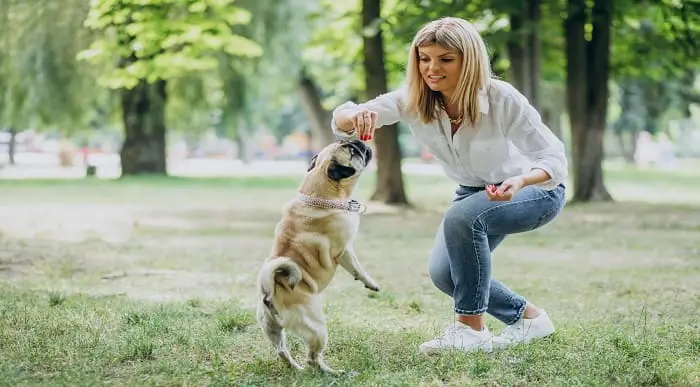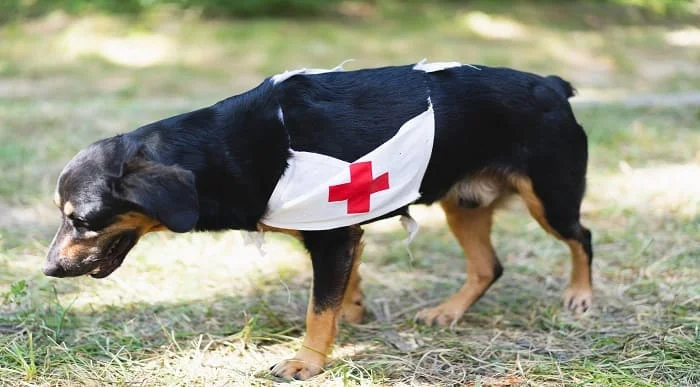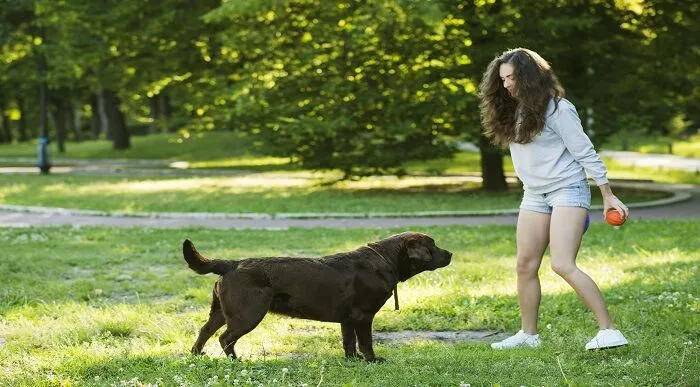Animal Care
How to Train Your Dog to Ignore Other Dogs?
One of the most common complaints dog owners face is that their dogs pull on leash to get to other dogs. But why do they do it? There can be a number of reasons – it can be either the desire for social interaction or it might be the desire to make the other dog go away. Whatever the reason is, you need to figure out how to train your dog to ignore other dogs.
Find out more about the possible solutions to your problem. Read the blog thoroughly.
If you are a dog owner, you already know how much you need to train and tackle- leash training, basics for sit, stay, lie down and recall, learning to interact appropriately with other dogs and not getting into fights or being reactive. The list can go on and on. While all these can be challenging for you, know that the council of North Somerset impose fines on those who allow dogs off their leads in areas where they should not be.
As per BBC, “Dog fouling and irresponsible dog ownership is a subject that frequently gets people talking. Dog walkers in North Somerset will be asked to prove they have the means to pick up after their pet or risk a £75 on-the-spot fine.” That is why you should be careful about your dog and train them responsibly so that you are not fined unnecessarily.
Table of Content
Why does your Dog keep Staring at you?
You may find it unusual or get confused when you find your dog staring at you. Keep calm! There is nothing to be worried about! You just need to know the possible reasons for dogs doing so. Look at the reasons below and find out what is bothering your dog particularly.
Attention
If your dog is staring at you, maybe it’s seeking your attention. The reason can be, it wants you to do something like rubbing its belly, throwing the ball or taking it outside for a walk. When your dog wants attention, it will probably be just as happy with any kind of love and affection from you.
Confusion
Another reason for staring can be that your dog is trying to figure out whether or not you want it to do something. Dogs don’t want to miss a possible cue or get yelled at for doing something wrong. Since our furry companions carry a certain lack of speech, they heavily rely on the subtle eye contact of their humans to direct them.
Dogs might also wait and stare at you for more deliberate cues like to fetch, sit down, stay etc., through which they generally get a reward.
Depression
Your dog can feel neglected or depressed and then stare at you because they are bored or want your affection.
You should be aware of any shift in behaviour or mood of your pet, as the entire relationship starts and ends with eye contact. Also, be conscious that by displaying any tense or angry body language, you could be sending the wrong signal to the dog.
Hunger
Even though there can be a number of reasons for your dog to stare at you, the majority of the time, it happens because your pet is hungry. It generally takes place in the kitchen or any other environment where they know that there is a reasonable chance of going to be receiving some sort of treat.
Should You Stop Your Dog From Staring at You?
You do not need to stop your dog from staring at you; you should simply accept it as normal. Staring is not a sign of aggression and so it is best not to stress about it.
But, if they are persistent with it and become aggressive, you should try to divert their attention and distract them with toys, pets, or other bonding activities.

Why do your Dog Barks and Lunges When Meets Other Dogs?
It can be an awful experience for you when your dog frantically starts barking and lunging at other dogs. As a dog owner, you should try to understand the reason behind this ‘aggressive’ behaviour of your pet and help them overcome it.
- Your dog can be fearful of other dogs because of the limited experiences of other dogs as a puppy or due to any negative experience. They bark and lunge towards other dogs to try and make them move away or leave.
- They are frustrated by other dogs because they usually get to meet every dog they see, but now they can’t because of the leash. Being trapped on the leash can heighten your pet’s anxiety. Dogs typically react this way in an attempt to get away from the trigger. They bark and pull on their leash because they get so excited that they just can’t wait to get closer.
- Sometimes, your dog can be both fearful and frustrated. The mixture of feelings can often cause barking and lunging leading to conflict.

Aggressive Dog Training Course Online: Stop Attacking
- Accredited Courses
- Tutor Support Included
- 3 Installment Plan at checkout
- 14 Days Money Back Guarantee
How to Train Your Dog to Ignore Other Dogs?
Having a dog who barks at and pulls towards other dogs on walks can be embarrassing and you might wonder why your dog is doing this in the first place. However, it’s a common behaviour problem that is prevalent in most dogs.
Under such a scenario, dog training becomes crucial. You need to train your dog to ignore other dogs. But, how to do so? Let’s look at the following ways-
Find the reason
Without knowing the problem, you cannot find the solution. That is why try to understand what provokes your dog, what they react to, and how close they have to be before it starts barking and lunging. Your dog can be sensitive towards any particular breed or sex of other dogs which makes it react more intensely.
It can also be about any specific place or time. For example, your dog might start barking while approaching home after a walk or might bark during the night. This would help you understand how to make your dog more comfortable.
Teach impulse control
When training your dog how to ignore other dogs on walks, you should teach impulse control as well. If your dog starts barking at the other dogs, tell them to “quiet” and reward them with a treat or praise once they do it. In this way, they will learn that barking is not acceptable behaviour.
Isolate your dog if needed
If your dog fails to behave, take him for a walk in quieter places to avoid meeting other dogs. It is essential to create as much space as you can in order to help your dog stay calm.
High-intensity exercises like playing with other dogs and fetching are intense and often release adrenaline, which can make it harder for your dog to relax and make good choices. If needed, avoid those as well.
Try this for a couple of weeks and see if there is any change. All these should be helping your dog overcome its stress, lowering their adrenaline and cortisol levels so that they can cope more easily when they next meet another dog.
Use a gentle tone
The tone of your voice will play a vital role while training your dog. If you use a commanding or harsh tone, they will get scared and not listen to what you say. That is why it is important for you to use a gentle tone while training them.
Give treats
You should consider using treats when training your dog. Make sure that you have something yummy enough so that your dog pays attention to you instead of being distracted by anything else in the environment around them.
Some Useful Methods of Training
Here are three useful methods provided for you to train your dogs to ignore other dogs-
Attention and Reward Method
- Put your dog on a leash and take them out for a walk. Before going out for a walk, call your dog by his name and give him a treat if he looks at you.
- Repeat the process several times around the house until he gets habituated.
- Once you go for a walk along with your dog, try to ignore any barking dogs or other distractions around you. By ignoring these distractions, you would be guiding your pet on how to behave.
- If your dog comes closer to other dogs, call out his name. If he looks at you, reward them by praising their calm behaviour and giving them a treat. This way, they will learn that this is the best action to take instead of barking at other dogs or strangers that pass by.
- Continue practising these steps regularly and eventually; your dog will stop paying attention towards other dogs during walks.
The Friend Method
- Ask your friends to bring their dogs over for a training session.
- In a large area, put your dog on a leash and stand beside him.
- Have your friends and their dogs line up with a space of 20 feet apart.
- Then again, ask your friends to walk their dogs past to where you and your dog are standing.
- If your dog barks at other dogs, tell him “NO” and command him to sit. If he does, then give him a treat.
- Keep doing this for around 30 minutes every day or at least several times a week. Once your dog has mastered this, you can take your dog for walks in a public space and expect the same behaviour.
The Nudge Method
- Take your dog out for a walk and keep calm and relaxed as you walk. Your dog will be able to sense this and shall behave in the same manner.
- If your dog sees another dog and starts to lunge towards them, do not try to pull his leash; instead, gently nudge your dog to the side using your knee in order to distract him. Give him a treat if he settles.
- If he does not back down, then make a sharp tug on his leash while calling his name. Give him a treat if he behaves.
Conclusion
By training your dog to ignore other dogs, you can prepare them to be well-behaved and at the same time prevent any injuries while they are on a walk. By following the steps above, you will have more control over your pet and your furry friend will not embarrass you anymore.
What to Read Next:
- One to One Dog Training – Everything You Need to Know
- How Much Does it Cost to Train a Guide Dog
- How to Become a Dog Walker – A Definitive Guide












